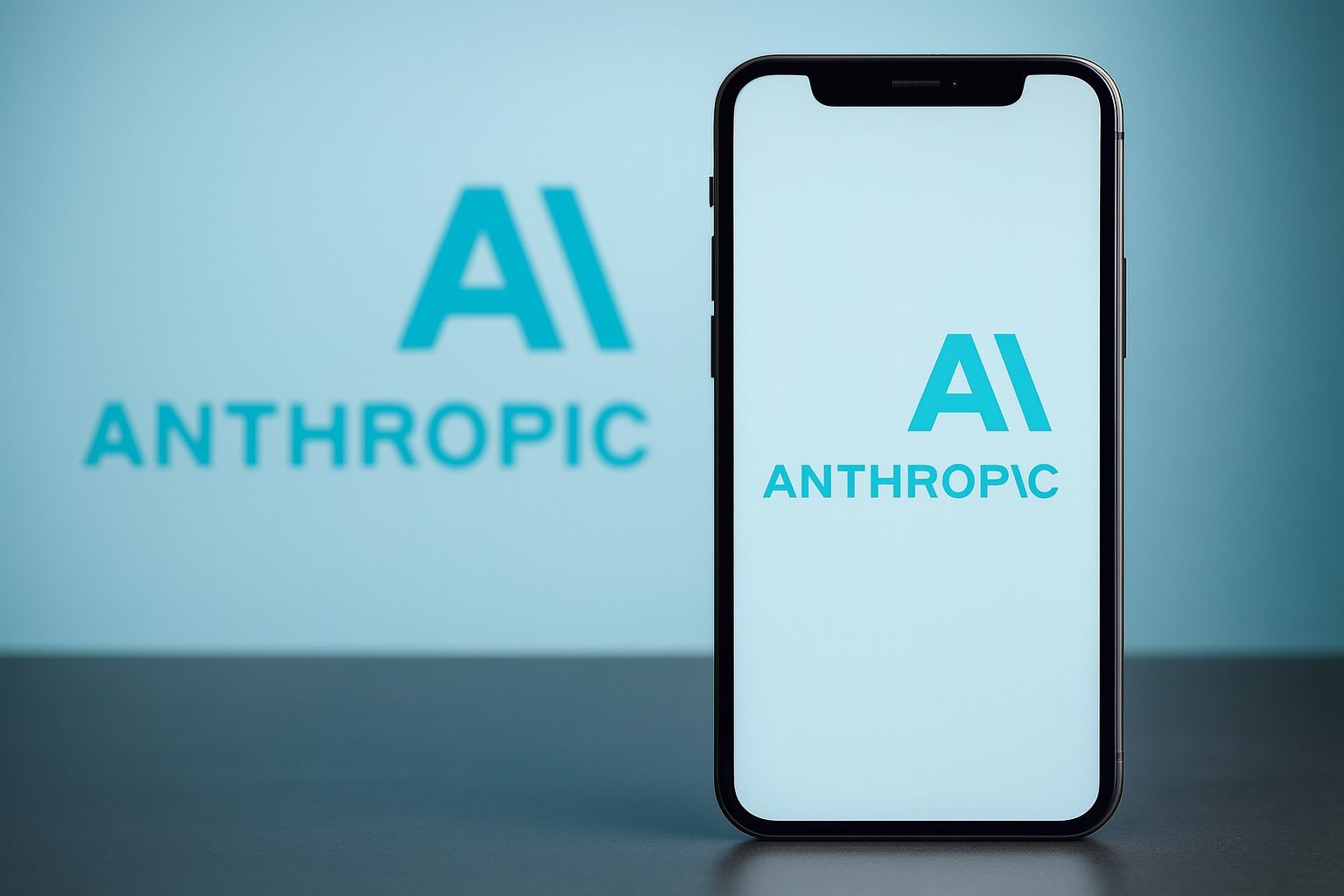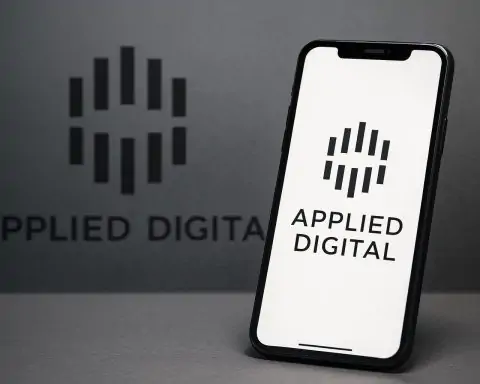Microsoft, Nvidia and Anthropic have unveiled one of the largest AI cloud and chip partnerships to date, stitching together a package worth up to $45 billion and reshaping how frontier AI models are built, trained and distributed.
At the heart of the deal, announced today, Anthropic is committing to buy $30 billion of cloud computing capacity from Microsoft Azure, while Nvidia and Microsoft together plan to invest up to $15 billion in Anthropic, the company behind the Claude family of AI models. [1]
The move deepens ties between three of the most powerful players in AI infrastructure and models, and comes just weeks after OpenAI signed a separate $38 billion cloud deal with Amazon Web Services, underscoring a rapid escalation in big-tech spending on AI compute. [2]
Key facts at a glance
According to coordinated announcements from Microsoft, Nvidia and Anthropic, along with regulatory and financial reporting: [3]
- $30 billion Azure commitment
- Anthropic will purchase $30 billion of compute capacity from Microsoft Azure to power current and future Claude models.
- The agreement allows Anthropic to contract up to 1 gigawatt of compute capacity, built on Nvidia’s latest AI systems. [4]
- Up to $15 billion in new investment into Anthropic
- Nvidia will invest up to $10 billion in Anthropic.
- Microsoft will invest up to $5 billion. [5]
- Claude comes to Azure at full strength
- Only frontier model on all three major clouds
- With this deal, Claude becomes the only frontier LLM available across AWS (Amazon Bedrock), Google Cloud (Vertex AI) and now Microsoft Azure AI Foundry. [8]
- Amazon stays in the picture
- Anthropic stressed that Amazon remains its primary cloud provider and training partner, despite the huge Azure commitment — underlining a deliberate multi‑cloud strategy rather than an exclusive shift. [9]
A $30 billion bet on Azure – and a gigawatt of AI power
The compute portion of the deal is striking on its own. Anthropic’s pledge to spend $30 billion on Azure makes Microsoft the company’s largest single cloud buyer by contract value, even as Amazon keeps the “primary provider” role for now. [10]
The companies say Anthropic can contract up to 1 gigawatt (GW) of AI compute capacity on Azure, powered by Nvidia Grace Blackwell and Vera Rubin systems — Nvidia’s newest data center platforms designed specifically for extremely large AI workloads. [11]
To put a gigawatt in perspective:
- 1 GW of power capacity is on the scale of a large power plant.
- It implies massive new data center builds or expansions, with significant implications for energy demand, cooling infrastructure and grid planning.
The structure of the agreement mirrors a growing pattern in AI: “circular” deals where a cloud or chip provider invests billions in an AI startup, which in turn commits to spend even more buying compute from that provider. Reuters notes that such arrangements, including OpenAI’s recent $38 billion AWS agreement and its stated ambition to spend around $1.4 trillion on 30 GW of compute, are fueling both optimism and bubble fears around AI infrastructure. [12]
Why Microsoft is doubling down on Anthropic
Microsoft has spent years as OpenAI’s primary strategic partner, using GPT‑series models as the backbone of Copilot across Windows, Office and developer tools. But the new pact with Anthropic shows how aggressively Microsoft is now embracing a multi‑model strategy. [13]
More model choice for Azure and Copilot customers
Under the new deal:
- Azure AI Foundry customers will be able to call Claude Sonnet 4.5, Opus 4.1 and Haiku 4.5 alongside other models in Microsoft’s catalog. [14]
- Microsoft will continue offering Claude across the Copilot family, including Microsoft 365 Copilot, GitHub Copilot and Copilot Studio, not just as a niche option but as a first‑class model. [15]
Reporting from The Verge indicates that Microsoft has already begun surfacing Claude prominently in its developer tooling, including preferring Claude 4 over internal alternatives in some Visual Studio Code AI model selections, and rolling Claude Sonnet 4 and Opus 4.1 into Microsoft 365 Copilot experiences. [16]
Strategically, this does a few things for Microsoft:
- Reduces single‑vendor risk after a tumultuous period in its OpenAI relationship. [17]
- Positions Azure as the cloud where enterprises can choose multiple frontier models – OpenAI, Anthropic and others – rather than being locked into just one.
- Lets Microsoft pair Anthropic’s emphasis on AI safety and “constitutional AI” with its own Copilot push into regulated sectors like finance, healthcare and government. [18]
What Nvidia gains: demand, data and design influence
For Nvidia, the deal is both a sales pipeline and a product‑shaping opportunity.
- Anthropic will standardize future Claude training and inference on Nvidia architectures, initially relying on Grace Blackwell and Vera Rubin‑based systems for up to 1 GW of capacity. [19]
- Nvidia and Anthropic will co‑design and co‑tune both models and future chips, optimizing for performance, energy efficiency and total cost of ownership. [20]
This comes as Nvidia is already the dominant supplier of AI accelerators, with market share above 90% in some data center GPU segments and a market value that surpassed $4 trillion earlier this year. [21] The Anthropic partnership bolsters Nvidia’s case that demand for its next‑generation platforms will stay strong well into the second half of the decade.
At the same time, the equity commitment of up to $10 billion aligns Nvidia financially with one of OpenAI’s main rivals, echoing its recently announced massive partnership with OpenAI itself. [22]
Anthropic’s multi‑cloud tightrope: Azure, AWS and Google
One of the most striking details in Anthropic’s own announcement is what didn’t change: Amazon is still Anthropic’s primary cloud and training partner. [23]
Anthropic is now deeply tied to three different cloud giants:
- Amazon Web Services (AWS) – strategic investor and primary cloud; Anthropic’s models are distributed through Amazon Bedrock.
- Google Cloud – hosts Claude via Vertex AI, with Google also previously investing in Anthropic.
- Microsoft Azure – now getting $30 billion of compute spend and becoming the third hyperscaler to host Claude. [24]
That multi‑cloud stance gives Anthropic:
- Broader reach: enterprises can adopt Claude on whichever cloud they already use.
- Bargaining power: commitments are large, but spread across multiple vendors, limiting lock‑in.
- Regulatory cover: being visibly non‑exclusive with any single platform may soften antitrust scrutiny versus a one‑cloud arrangement.
For cloud customers, it means Claude is increasingly becoming a cloud‑agnostic frontier model, in contrast to some competitors that are more tightly bound to a single ecosystem.
Circular money flows and AI bubble jitters
While the headline numbers are eye‑catching, the structure of the deal also feeds into growing debate about an AI investment bubble.
Reuters highlights how these circular arrangements work:
- A cloud or chip company invests billions into an AI startup.
- The startup then commits to spend an even larger sum buying compute from that same partner.
- On paper, everyone books future revenue and growth, but critics warn it can inflate valuations without clear line‑of‑sight to end‑user demand. [25]
Recent moves from major investors reinforce those concerns. Reuters points out that some large funds have been trimming AI positions — including Peter Thiel’s hedge fund and SoftBank’s Masayoshi Son, both of whom have reportedly sold Nvidia holdings even as they redeploy capital into other AI bets such as OpenAI. [26]
The Microsoft‑Nvidia‑Anthropic package will likely become a key data point in that debate: is it visionary long‑term infrastructure building, or another example of frothy circular deal‑making?
What changes for enterprises and developers
For companies building on Azure — and for Microsoft’s vast installed base of business users — the practical impact of today’s announcements will unfold across several fronts:
1. More choice inside Azure AI Foundry
Developers and data teams on Azure will be able to:
- Call Claude Opus 4.1 for the most capable, reasoning‑heavy use cases.
- Use Claude Sonnet 4.5 as a balanced, general‑purpose model.
- Turn to Claude Haiku 4.5 for lighter‑weight, latency‑sensitive workloads. [27]
These models will sit alongside OpenAI models and other options in Azure’s catalog, letting builders pick and mix according to cost, latency, and safety needs.
2. Claude woven into Copilot
Microsoft and Anthropic have confirmed that Claude will continue to be integrated into: [28]
- Microsoft 365 Copilot – for summarization, drafting, and data analysis across Word, Excel, Outlook and Teams.
- GitHub Copilot – as an additional code‑generation and review engine.
- Copilot Studio – where enterprises can compose their own task‑specific AI agents.
For users, the shift may not be obvious in branding – everything is still “Copilot” – but under the hood, Microsoft will increasingly be routing different tasks to different models, including Claude.
3. Easier “hedging” for large AI customers
Enterprises that have already standardized on Claude via AWS Bedrock or Vertex AI gain a cleaner path to:
- Move or replicate workloads onto Azure without having to re‑train or re‑evaluate a different model family.
- Run multi‑cloud deployments where Claude powers similar workflows across several regions and providers. [29]
That kind of portability is likely to be attractive in highly regulated industries, where redundancy and resilience are central concerns.
The bigger picture: AI power blocs are hardening
Today’s announcement crystallizes a new pattern in the generative AI landscape:
- OpenAI + Amazon + Nvidia – a massive cloud and hardware pact centered around GPT models and a plan for tens of gigawatts of compute. [30]
- Anthropic + Microsoft + Nvidia – now anchored by a $30B Azure commitment, up to $15B in investment, and a gigawatt‑scale Nvidia hardware roadmap. [31]
- Google + Anthropic (and Google’s in‑house models) – via Vertex AI and prior Google investments. [32]
Rather than converging on a single dominant model or provider, the industry is coalescing around competing alliances of cloud, chip and model companies, each racing to secure compute, energy, and customers.
For policymakers and regulators, the Microsoft‑Nvidia‑Anthropic tie‑up will raise familiar questions:
- Does this further concentrate power in a tiny number of hyperscalers?
- How should regulators view circular investment/compute‑purchase structures?
- What safeguards are in place as these systems trend toward ever‑greater capabilities?
Anthropic, for its part, continues to emphasize its work on AI safety, including its “Responsible Scaling Policy,” though how that translates into day‑to‑day deployment inside Microsoft’s products will be closely watched. [33]
What to watch next
Over the coming months, expect:
- Product rollouts – More details from Microsoft on when Claude models will be generally available in Azure AI Foundry and how they’ll be priced versus existing options. [34]
- Regulatory reactions – Scrutiny from US and EU regulators who are already probing AI and cloud market concentration.
- Energy and infrastructure plans – Clarification on where that gigawatt of compute will physically sit, and how Microsoft intends to power it. [35]
- Competitive responses – Moves from Amazon, Google, and other hyperscalers to secure similar long‑term commitments from model companies and enterprise customers.
For now, though, 18 November 2025 will go down as the day Microsoft, Nvidia and Anthropic formalized a new mega‑alliance – one that could shape the balance of power in AI infrastructure and models for years to come.
References
1. www.anthropic.com, 2. www.reuters.com, 3. www.anthropic.com, 4. www.anthropic.com, 5. www.anthropic.com, 6. www.anthropic.com, 7. www.anthropic.com, 8. www.anthropic.com, 9. www.anthropic.com, 10. www.anthropic.com, 11. www.anthropic.com, 12. www.reuters.com, 13. www.reuters.com, 14. blogs.nvidia.com, 15. www.anthropic.com, 16. www.theverge.com, 17. www.theverge.com, 18. www.anthropic.com, 19. blogs.nvidia.com, 20. www.anthropic.com, 21. en.wikipedia.org, 22. www.anthropic.com, 23. www.anthropic.com, 24. www.anthropic.com, 25. www.reuters.com, 26. www.reuters.com, 27. blogs.nvidia.com, 28. www.anthropic.com, 29. www.anthropic.com, 30. www.reuters.com, 31. www.anthropic.com, 32. www.anthropic.com, 33. www.anthropic.com, 34. blogs.nvidia.com, 35. www.investing.com










